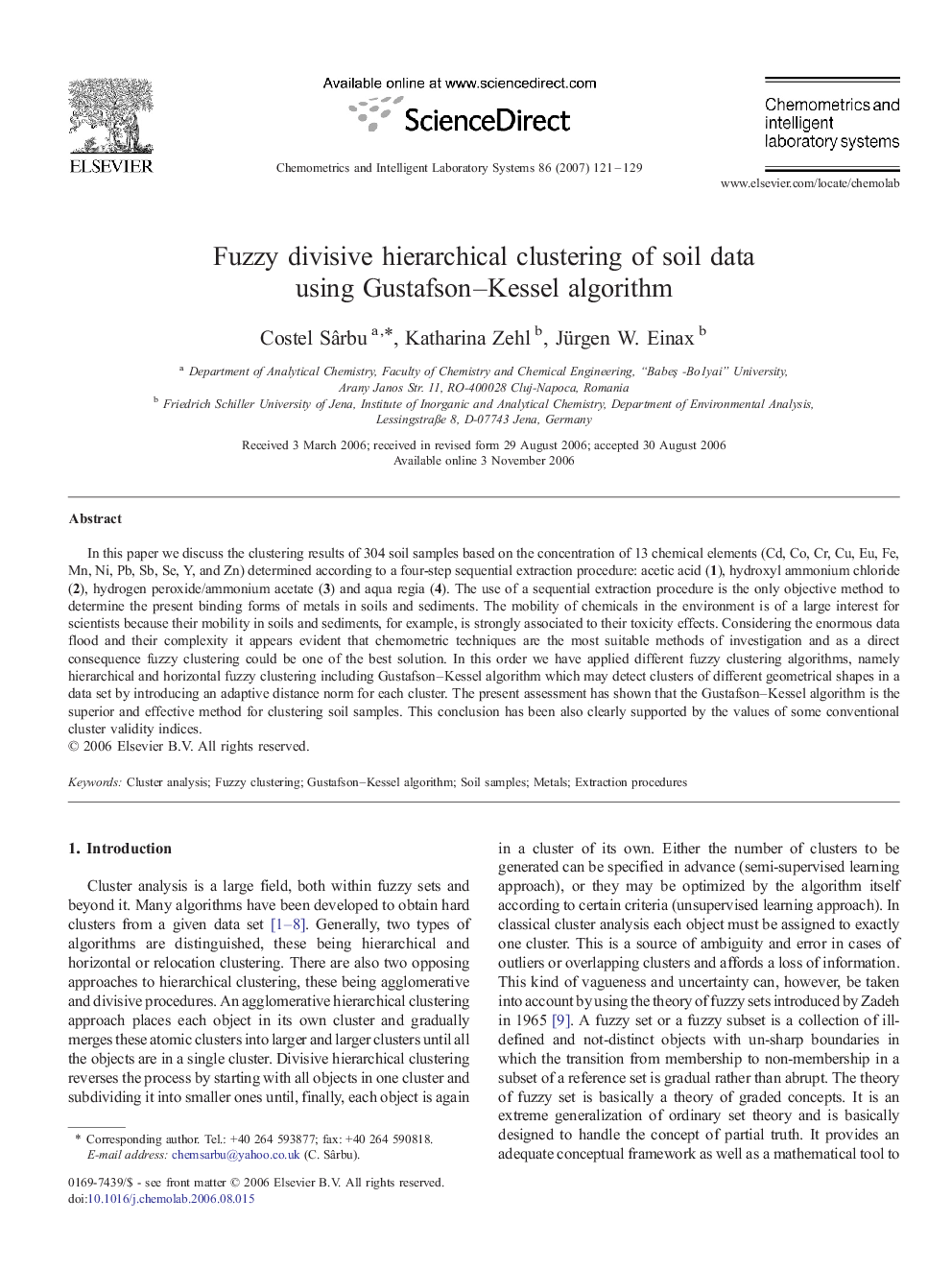| Article ID | Journal | Published Year | Pages | File Type |
|---|---|---|---|---|
| 1180610 | Chemometrics and Intelligent Laboratory Systems | 2007 | 9 Pages |
In this paper we discuss the clustering results of 304 soil samples based on the concentration of 13 chemical elements (Cd, Co, Cr, Cu, Eu, Fe, Mn, Ni, Pb, Sb, Se, Y, and Zn) determined according to a four-step sequential extraction procedure: acetic acid (1), hydroxyl ammonium chloride (2), hydrogen peroxide/ammonium acetate (3) and aqua regia (4). The use of a sequential extraction procedure is the only objective method to determine the present binding forms of metals in soils and sediments. The mobility of chemicals in the environment is of a large interest for scientists because their mobility in soils and sediments, for example, is strongly associated to their toxicity effects. Considering the enormous data flood and their complexity it appears evident that chemometric techniques are the most suitable methods of investigation and as a direct consequence fuzzy clustering could be one of the best solution. In this order we have applied different fuzzy clustering algorithms, namely hierarchical and horizontal fuzzy clustering including Gustafson–Kessel algorithm which may detect clusters of different geometrical shapes in a data set by introducing an adaptive distance norm for each cluster. The present assessment has shown that the Gustafson–Kessel algorithm is the superior and effective method for clustering soil samples. This conclusion has been also clearly supported by the values of some conventional cluster validity indices.
